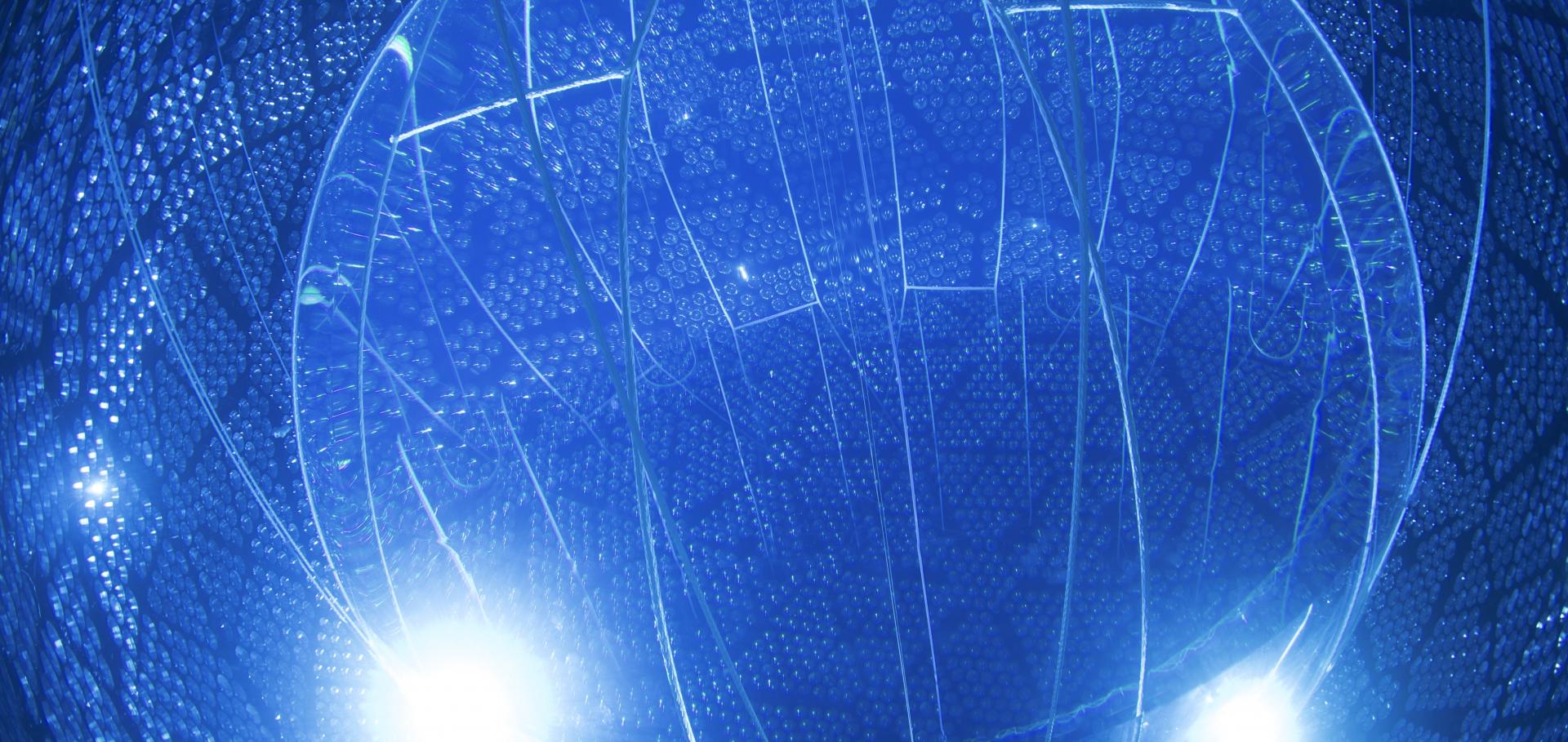Neutrinos are among the most fundamental and most enigmatic particles in Nature. They are produced in basic nuclear reactions, like those that power the Sun, from which there are about a hundred billion passing through your thumbnail every second. Neutrinos interact with matter extremely weakly, which means they pass right through the earth without a care, making them very difficult to detect. Yet, despite this etherial and apparently highly impractical nature, we know they are crucial to the very fabric of the universe.
The Sudbury Neutrino Observatory (SNO) was built by a team of Canadian, American and British scientists to solve a particular mystery: previous experiments indicated that the number of neutrinos produced by the sun was substantially less than well-established theory had predicted. The construction was a major engineering feat, using 1000 tonnes of heavy water (water where the hydrogens contain an extra neutron) located in an ultra-clean laboratory nearly 2000 meters below ground in northern Ontario. The sensitive photomultiplier tubes attached to reflective funnels used to gather the telltale flashes of light in the detector are shown above. We found the solution to the puzzle in 2001, demonstrating that the predicted number was actually produced but that, amazingly, neutrinos have the ability to transform into other varieties as they travel - varieties that previous experiments were not built to see, but which SNO could. Since then, we've improved the precision of our measurements and neutrino research has become a very prominent field of study. SNO earned a Nobel Prize in 2015 and was awarded the Breakthrough Prize in 2016.
Now we are embarking on a modified version of the detector known as the SNO+ project. Here, the heavy water is replaced by liquid scintillator, a substance that readily glows when charged particles pass through it (in fact, the type we use is also put in detergents to make your clothes nice and white). This will allow us to be sensitive to different sorts of reactions and let us study not only neutrinos from the sun, but neutrinos from the earth, from nearby nuclear reactors, and even from supernova explosions that might occur in our galaxy. However, one of the principal studies will involve the search for an extremely rare nuclear process called "neutrinoless double beta decay." This can only happen in certain kinds of atoms (which we will mix into the scintillator) if neutrinos have an even stranger property that allows them to change into their own anti-particle. One consequence of such a discovery is that it might suggest a way in which the universe could have initially evolved through a process of “Leptogenesis” so as to avoid the cataclysmic annihilation between matter and antimatter that would have otherwise prevented our very existence.


